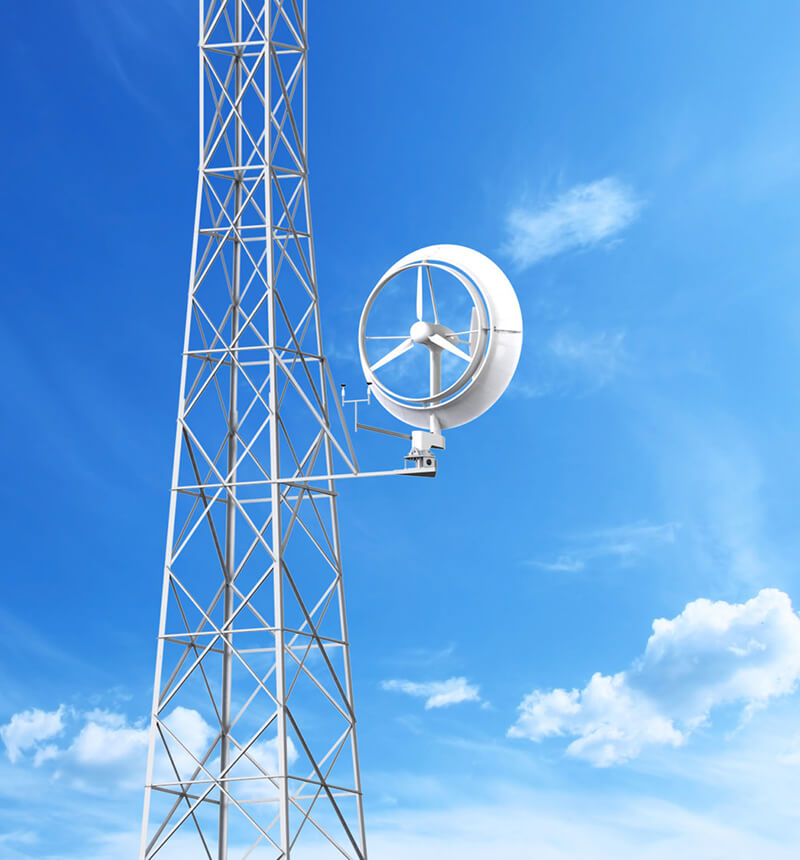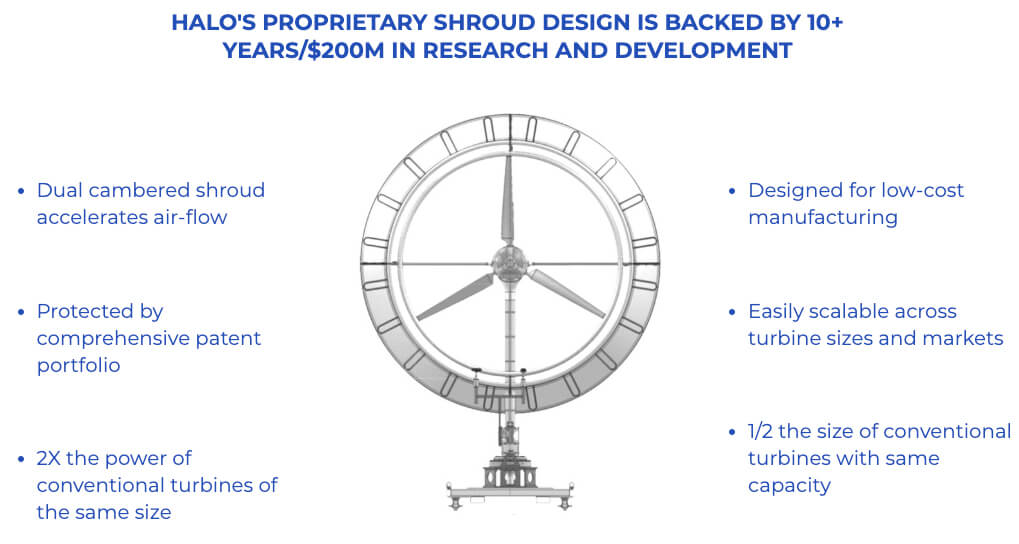
According to its developers, the Halo-6.0 micro-shroud wind turbine delivers at least two times as much energy as similar-sized conventional, open-bladed turbines, while providing low-cost renewable electricity to the telecom and other industries.
“It’s all about efficiency,” says Dr. Michael Werle, Technical Advisor & Board Member of Halo Energy in an online video. He is speaking about the company’s proprietary shroud wind-turbine technology. A shrouded turbine is typically optimized for extremely low wind speeds. The shroud or ring is significant because it affects the wind flow near the turbine, causing it to speed up.
Werle says the shroud dramatically increases turbine efficiency, boosting production as much as two to three times that of a non-shrouded turbine. Halo Energy aim was to build the world’s most efficient small-scale wind turbines. According to the company, its technology generates the lowest cost of electricity with units half the size of conventional micro-wind turbines.
Although wind energy is expected to surpass hydropower this year and become the number one source of renewable energy in the United States, the majority of this power comes from utility-scale projects. Small and distributed wind is also growing but at a slower pace. Halo Energy attributes the challenges of small wind to turbine design and efficiency. “Because of higher tip losses relative to rotor size, conventional open-bladed wind turbines become increasingly inefficient the smaller they get,” explains the company’s website.
So, the manufacturer’s set out to address the small-wind challenges. The result: the Halo-6.0 micro wind turbine, which is made of only two moving parts including a shroud that’s 12 feet in diameter. The 6-kW Halo turbine is based on jet engine technology and uses two closely coupled, convex shrouds that encircle the turbine blades. Essentially, the turbine acts as a passive pump, pulling airflow over the blades. Halo’s blade pitch is fixed, so the turbine passively aligns itself into prevailing winds without the need for complex subsystems.
What makes the Halo turbine particularly unique is that it can mount directly onto a communication tower without the need of a crane, land leases, or a separate foundation. Halo Energy says its micro-turbine was specifically engineered to address the energy requirements of the expanding off-grid telecom tower market. In fact, its dimensions are similar to most microwave antennae.

Click here to learn more about the Halo-6.0 wind turbine.
“The Halo-6.0 delivers two times as much energy as any similar-sized conventional, open-bladed wind turbine while reducing diesel-fuel consumption and providing reliable, low-cost renewable electricity,” said Vincent Loccisano, Halo Energy co-founder and CEO, in a press statement earlier this year. He said the first commercial unit will be delivered to an Alaskan telecommunications company, which has a growing network of remote cell towers and desire to eliminate dependency on diesel generators.
Most recently, the company secured a site to conduct third-party certification, which qualifies the Halo-6.0 wind turbine for federal production tax credits (PTC) and business investment tax credit (ITC). This means turbine users could either reduce their taxable income by about $0.019/kWh (for the PTC) or achieve a credit equal to 30% of the wind turbine and installation costs (for the ITC). Preparation of the certification site in Kern County, California is scheduled to begin in Q2 2019.
Although the Halo turbine was designed with telecommunication and mobile power facilities in mind, it can be used in a broad range of onsite generation applications. Halo Energy says it can also integrate seamlessly with solar energy and battery storage platforms. What’s more: it has a payback period of less than one year in good wind regimes.
Filed Under: Community wind, News, Turbines





I’ve researched and reviewed small residential wind turbines for use in rural areas.
And found that consistent wind speeds are low, not enough to make the move to wind turbine.
The https://windexchange.energy.gov/maps-data/325 shows the average annual wind speed at 30 meters
height is less than 5 meters per second. The Halo turbine particularly unique capabilities could accommodate generation at those low speeds.
I would be willing to invest in the 12 ft Halo if the initial cost and rate of return were effective and feasible.
Also a smaller model , perhaps as beta tested, for rurul, off grid , remote use -Would Be Great !!!
Thanks You Halo !!
Also researching the combination of wind and solar for rural use – communications, schools, commerce.
Best news yet for those of us who live in a country where 90% of us have no access to any form of electricity at all. Then again there is the cost and affordability factor for the rural majority in the 90% bracket. I wonder if a miniature version could be possibly tried out for small portable and home kit type arrangement.